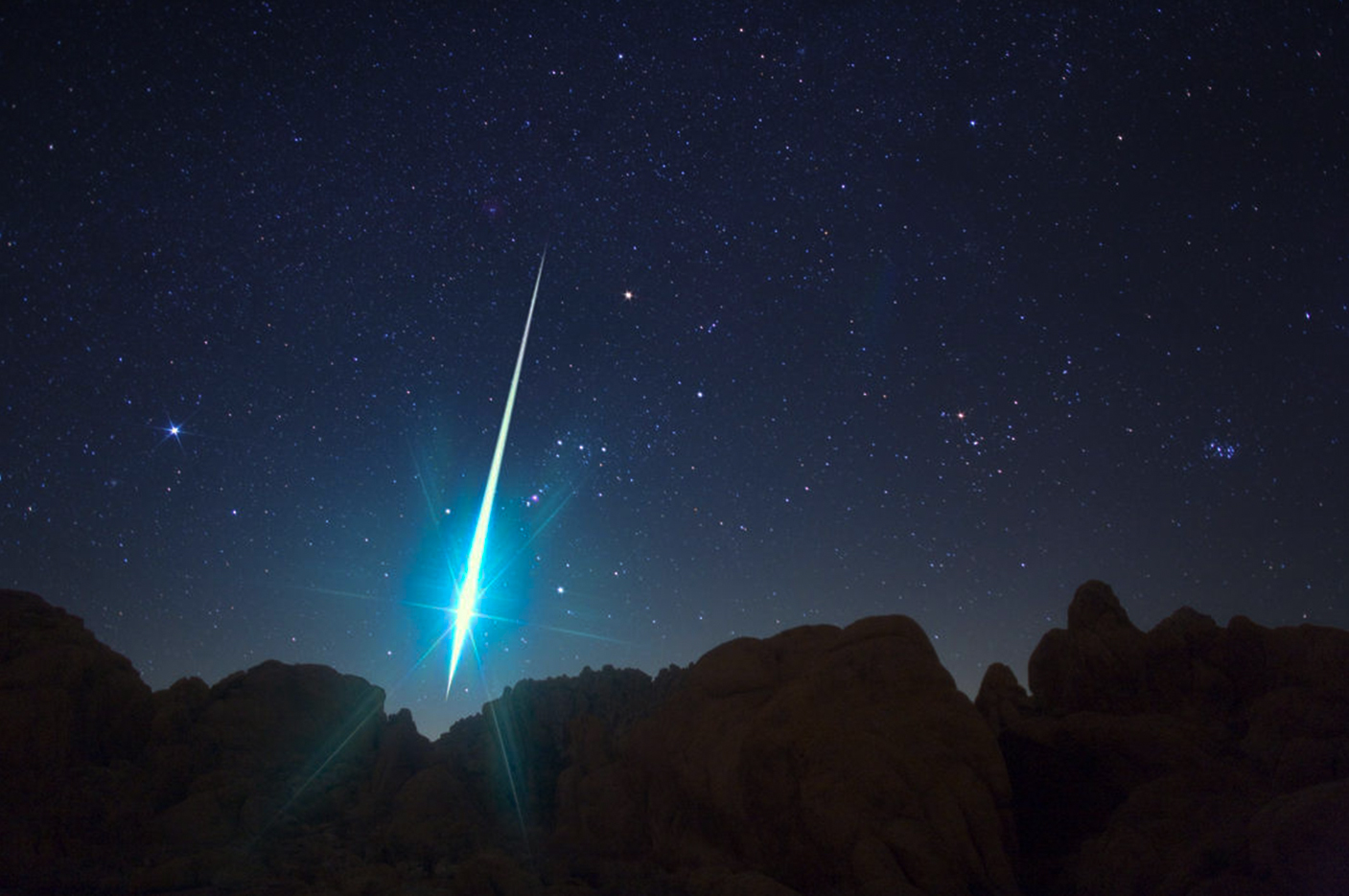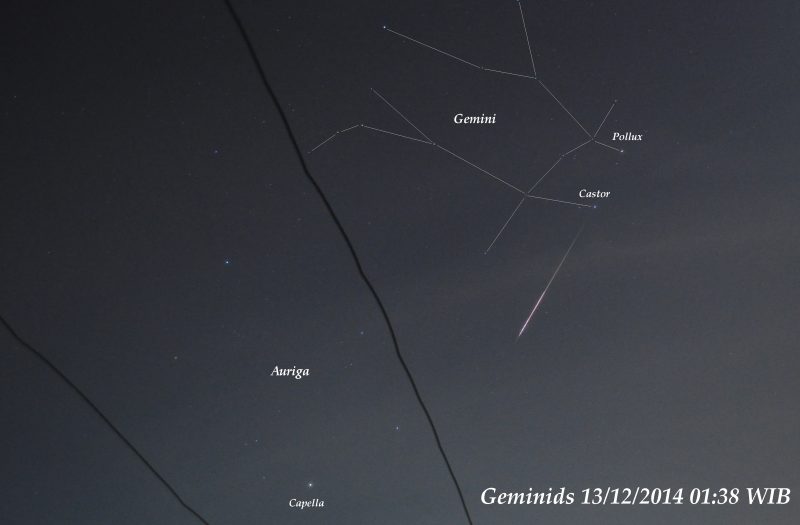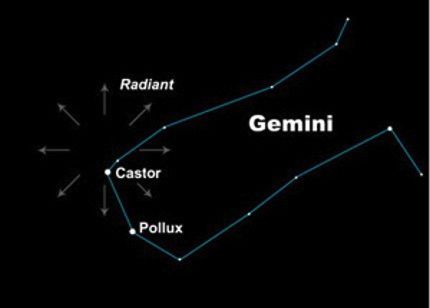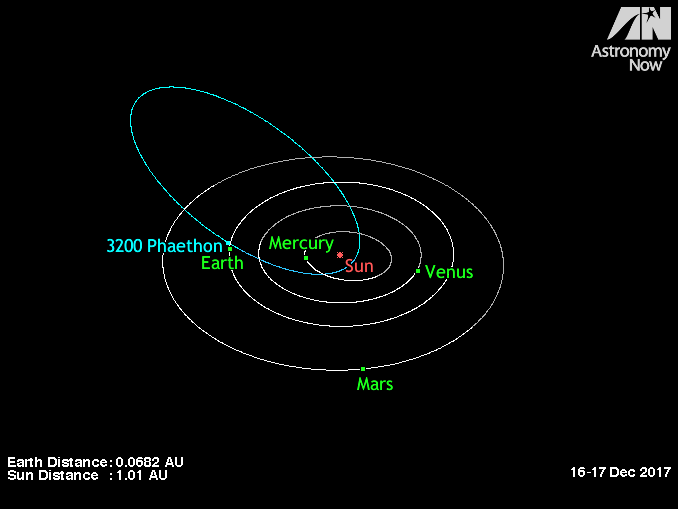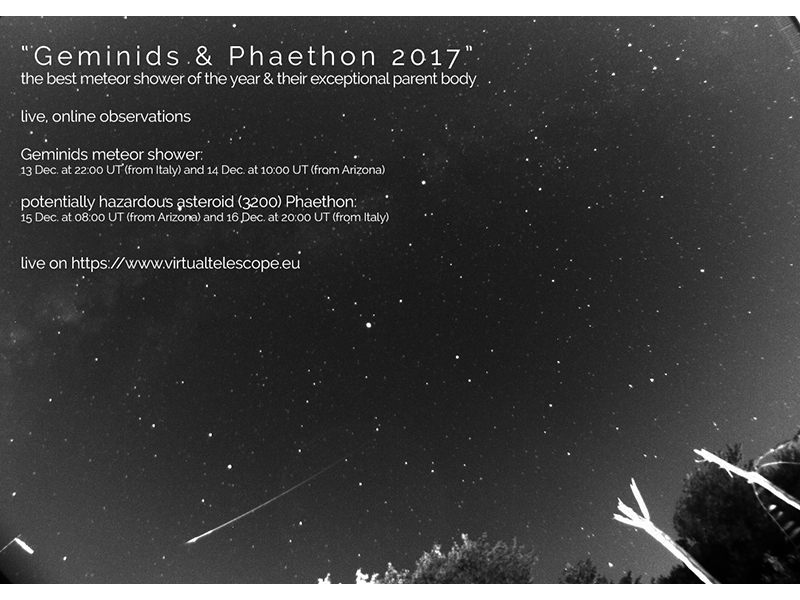The Geminid meteor shower is always reliable, but might be extra special in 2017. Peak morning is likely December 14. Be sure to watch for the moon near the morning planets. The Geminid meteor shower – always a highlight of the meteor year – will peak in 2017 around the mornings of December 13 and 14.
Geminid meteors tend to be
few and far between at early evening, but intensify in number as evening
deepens into late night. Observing around 2 a.m. is best. This shower favors
Earth’s Northern Hemisphere, but it’s visible from the Southern Hemisphere,
too. The Geminids’ parent body – a curious rock comet called 3200 Phaethon – is
exceedingly nearby this year, due to make a close sweep past Earth on December
16. Follow the links below to learn more about the Geminid meteor shower in
2017.
How to watch the Geminid
meteors in 2017. You can indeed watch this shower in the evening (late evening
is best). But the greatest number of meteors will fall in the wee hours after
midnight, centered around 2 a.m. local time (the time on your clock no matter
where you are on Earth), when the radiant point is highest in the sky.
As a general rule, the
higher the constellation Gemini climbs into your sky, the more Geminid meteors
you’re likely to see. These meteors are often bold, white and bright. On a dark
night, you can often catch 50 or more meteors per hour.
You need no special
equipment – just a dark, open sky and maybe a sleeping bag to keep warm. Plan
to sprawl back in a hammock, lawn chair, pile of hay or blanket on the ground.
Lie down in comfort, and look upward.
However, if you trace the
path of a Geminid meteor backwards, it appears to originate from within the
constellation Gemini. When you’re meteor-watching, it’s fun to bring along a
buddy. Then two of you can watch in different directions. When someone sees
one, they can call out “meteor!” This technique will let you see more meteors
than one person watching alone will see.
Be sure to give yourself
at least an hour of observing time. It takes about 20 minutes for your eyes to
adapt to the dark. Be aware that meteors often come in spurts, interspersed
with lulls.
Geminid’s parent – 3200
Phaethon – is nearby in 2017 Every year, in
December, our planet Earth crosses the orbital path of an object called 3200
Phaethon, a mysterious body that is sometimes referred to as a rock
comet.
The debris shed by 3200
Phaethon crashes into Earth’s upper atmosphere at some 80,000 miles (130,000
km) per hour, to vaporize as colorful Geminid meteors. In periods of 1.43
years, this small 5-kilometer (3-mile) wide asteroid-type object swings
extremely close to the sun (to within one-third of Mercury’s distance), at
which juncture intense thermal fracturing causes it to shed yet more rubble
into its orbital stream.
In 2017, 3200 Phaethon
will be exceedingly nearby around nights of the Geminid meteor shower’s peak.
This object will sweep close to Earth – just 0.069 astronomical units (6.4
million miles, 10.3 million km, 26 lunar-distances) on December 16, 2017 at 23
UTC; translate to your time zone.
The proximity of this
object might mean a fantastic year for the Geminids in 2017. Observing before
dawn? Watch moon sweep past planets. One of the best things about this year’s
Geminid shower is that the moon is out of the way.
It’s a waning crescent in
the east before sunup and so shouldn’t interfere much, if at all, with your
meteor-watching. Plus, the waning crescent moon will slide past the morning
planets, on the peak mornings on the 2017 Geminid shower.
Look at the chart above.
See how the moon gets closer to the sunrise point each day? That motion of the
moon across our sky is a translation of its motion in orbit around Earth.
Bring along your
binoculars when watching for the moon and planets, on the nights of the
Geminids’ peak. They won’t help you watch meteors, but you’ll be able to see
Jupiter in the same binocular field of view with the star Zubenelgenubi in the
constellation Libra the Scales. Look closely, and you’ll see that Zubenelgenubi
is a double star – two stars in one!
An earthgrazer meteor
possible at early evening. You won’t see as many Geminid meteors when the
constellation Gemini sits close to the eastern horizon during the evening
hours. But the evening hours are the best time to try to catch an earthgrazer
meteor. An earthgrazer is a slow-moving, long-lasting meteor that travels
horizontally across the sky.
Earthgrazers are rarely
seen but prove to be especially memorable, if you should be lucky enough to
catch one. Why are these meteors called the Geminids? If you trace the paths of
the Geminid meteors backward, they all seem to radiate from the constellation
Gemini the Twins.
This shower’s radiant
point nearly coincides with the bright star Castor in Gemini. That’s a chance
alignment, of course, as Castor lies about 52 light-years away while these
meteors burn up in the upper atmosphere, some 60 miles (100 km) above Earth’s
surface. Again, you don’t need to find the constellation Gemini to watch the
Geminid meteor shower. These medium-speed meteors streak the nighttime in many
different directions and in front of numerous age-old constellations.
Bottom line: Meteor
showers are part of nature and so inherently unpredictable. But the 2017
Geminids might be an awesome shower! Peak mornings December 13 and 14.
Moon near morning planets.
Parent body – 3200 Phaethon – nearby.
Via Earthsky


